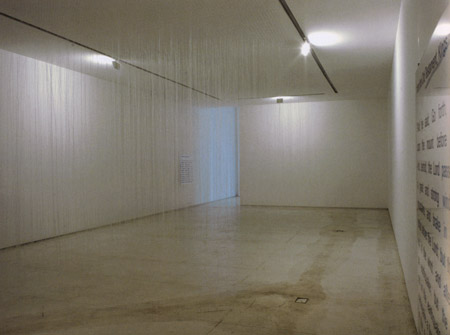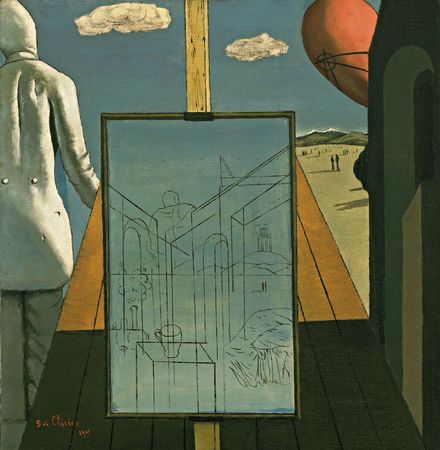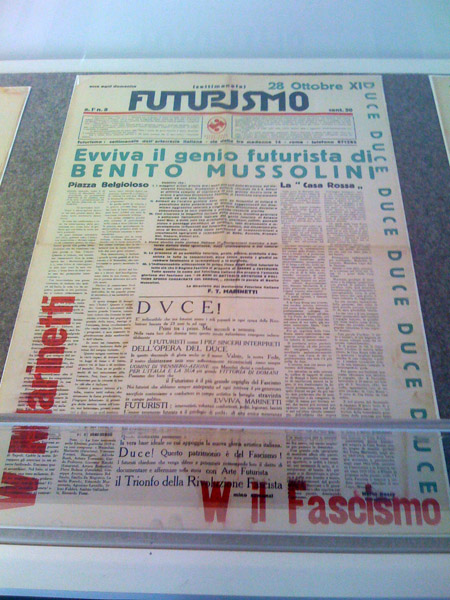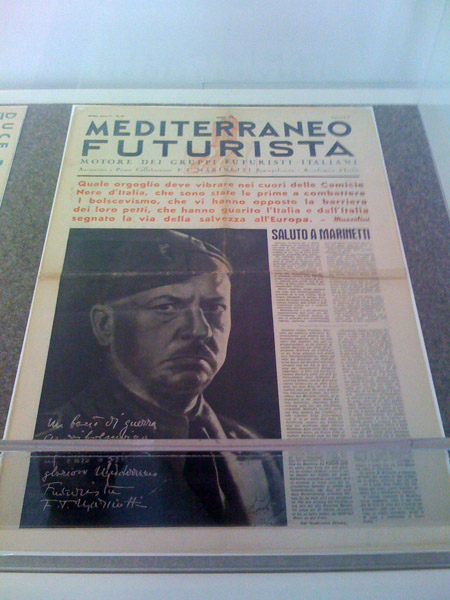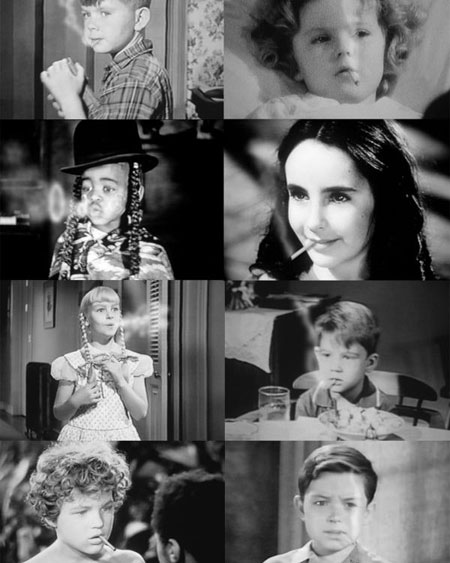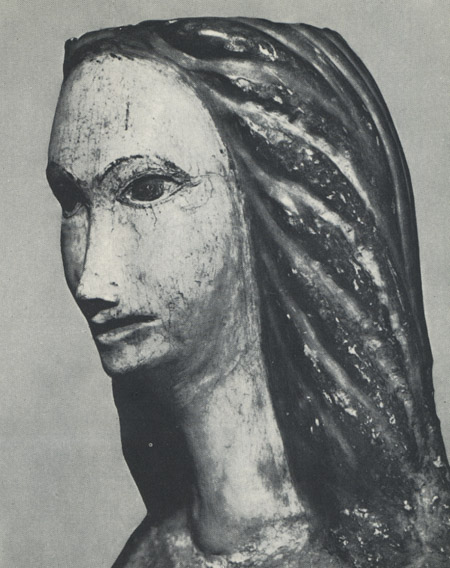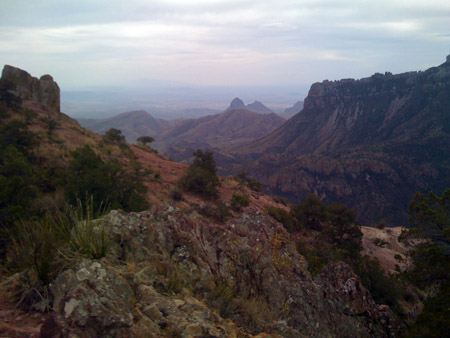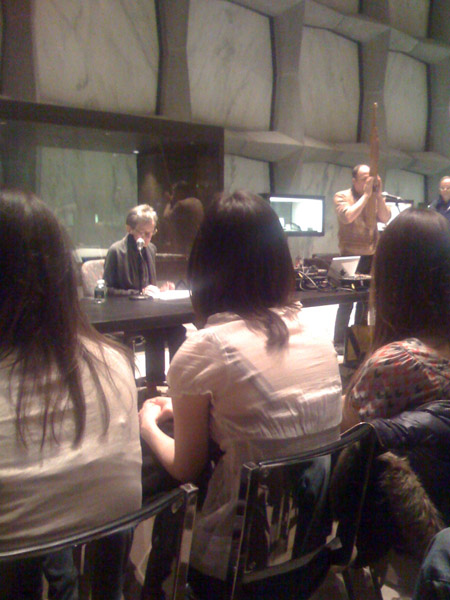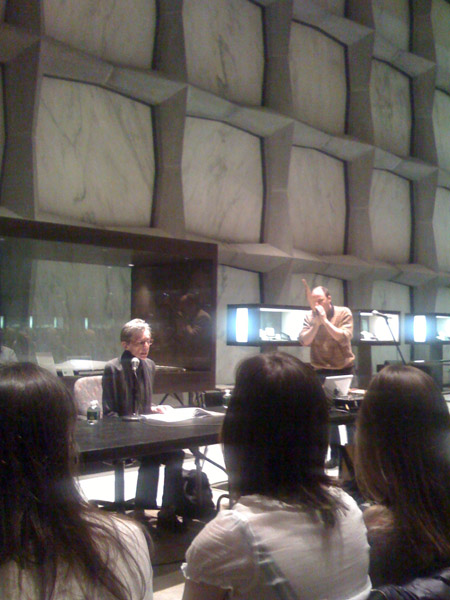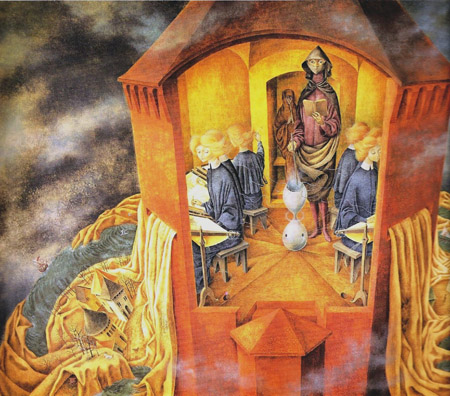(Mira Schendel, Ondas paradas de probabilidade, 1969. Nylon thread and wall text on acrylic sheet, installation, variable dimensions.)
Category Archives: images
the double dream of spring
the bad end of marinetti
(From MoMA’s almost impossible to find Futurism exhibit. It’s in the basement of the education building.)
children who smoke
(John Waters, Children Who Smoke, 2009. 8 c-prints; each image: 5 × 7 inches; framed: 26 1/2 × 20 1/2 inches. Edition of 5. On view at “Rear Projection” at Marianne Boesky.)
153. catalonia – madonna and child (detail)
in texas
susan howe & david grubbs at the beinecke
(Susan Howe & David Grubbs performing Souls of the Labadie Tract at the Beinecke Library at Yale, 10 February 2009. Grubbs is playing two different khaens.)
bordando el manto terrestre
(Remedios Varo, Bordando el manto terrestre, 1961, oil on masonite, Colección Particular, México D.F.)
“But all that had then gone on between them had really never escaped the confinement of that tower. In Mexico City they somehow wandered into an exhibition of paintings by the beautiful Spanish exile Remedios Varo: in the central painting of a triptych, titled ‘Bordando el Manto Terrestre,’ were a number of frail girls with heart-shaped faces, huge eyes, spun-gold hair, prisoners in the top room of a circular tower, embroidering a kind of tapestry which spilled out the slit windows and into a void, seeking hopelessly to fill the void: for all the other buildings and creature, all the waves, ships and forests of the earth were contained in this tapestry, and the tapestry was the world. Oedipa, perverse, had stood in front of the painting and cried. No one had noticed; she wore dark green bubble shades. For a moment she’d wondered if the seal around her sockets were tight enough to allow the tears simply to go on and fill up the entire lens space and never dry. She could carry the sadness of the moment with her that way forever, see the world refracted through those tears, those specific tears, as if indices as yet unfound varied in important ways from cry to cry. She had looked down at her feet and known, then, because of a painting, that what she stood on had only been woven together a couple thousand miles away in her own tower, was only by accident known as Mexico, and so Pierce had taken her away from nothing, there’d been no escape. What did she so desire escape from? Such a captive maiden, having plenty of time to think, soon realizes that her tower, its height and architecture, are like her ego only incidental: that what really keeps her where she is is magic, anonymous and malignant, visited on her from outside and for no reason at all. Having no apparatus except gut fear and female cunning to examine this formless magic, to understand how it works, how to measure its field strength, count its lines of force, she may fall back on superstition, or take up a useful hobby like embroidery, or go mad, or marry a disk jockey. If the tower is everywhere and the knight of deliverance no proof against its magic, what else?”
(Thomas Pynchon, The Crying of Lot 49, pp. 11–12.)
giotto’s joachim
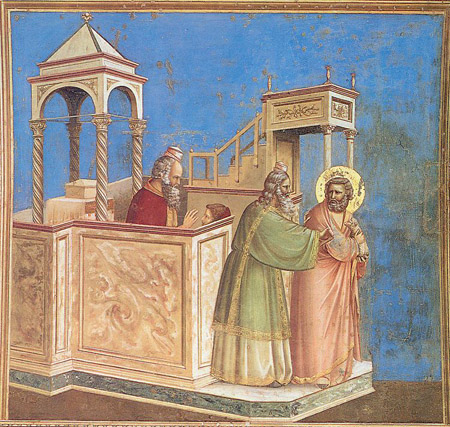
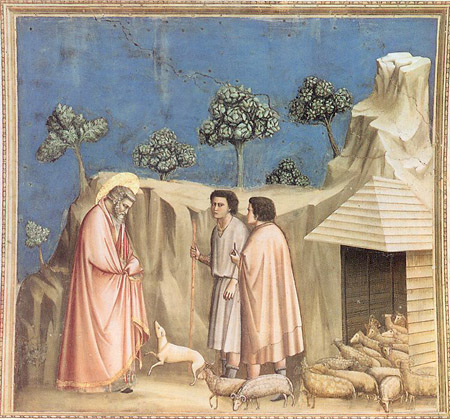
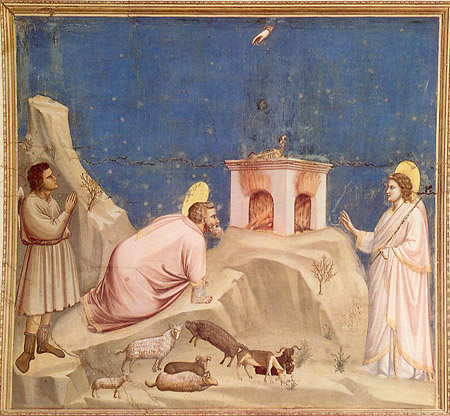
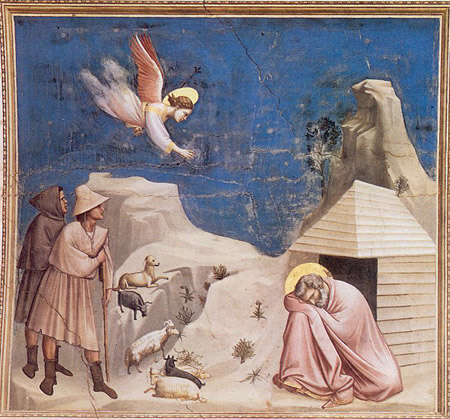
(Giotto’s frescoes in the Cappella degli Scrovegni, Padua. Proust:
When my father had decided, one year, that we should go for the Easter holidays to Florence and Venice, not finding room to introduce into the name of Florence the elements that ordinarily constitute a town, I was obligated to evolve a supernatural city from the impregnation by certain vernal scents of what I supposed to be, in its essentials, the genius of Giotto. At most – and because one cannot make a name extend much further in time than in space – like some of Giotto’s paintings themselves which show us at two separate moemnts the same person engaged in different actions, here lying in his bed, there getting ready to mount his horse, the name of Florence was divided into two compartments. . . . That (even though I was still in Paris) was what I saw, and not what was actually round about me. Even from the simplest, the most realistic point of view, the countries which long for occupy, at any given moment, a far larger place in our actual life than the country in which we happen to be.
from Swann’s Way (Moncrieff/Kilmartin/Enright trans.), cited in Eric Karpeles’s Paintings in Proust, p. 76.)
